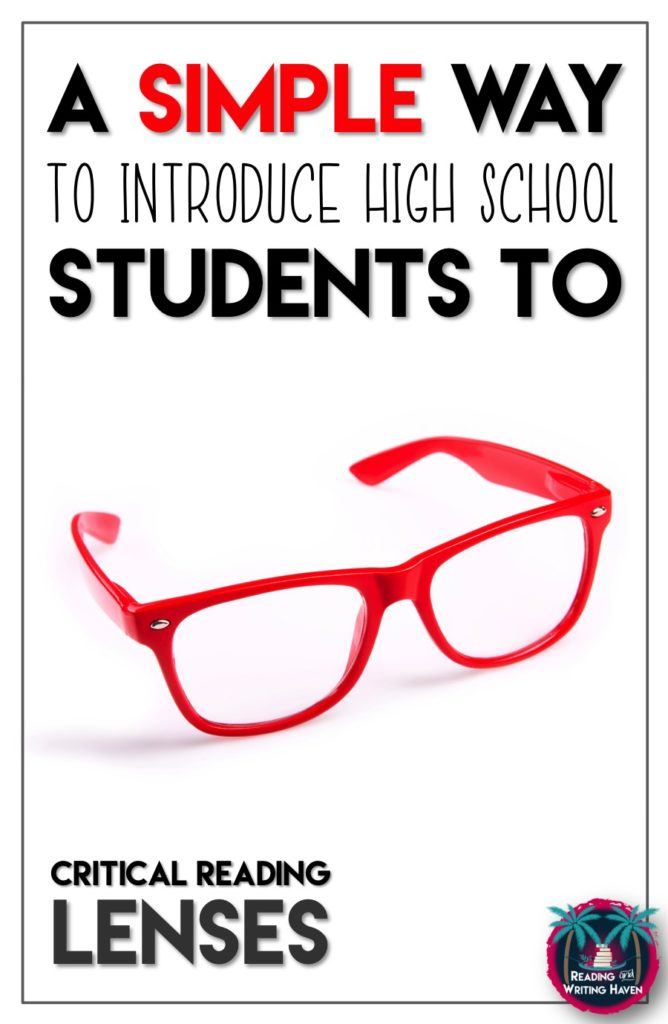A Simple Way to Introduce Students to Critical Reading Lenses: Tips for Texts, Lenses, & Assessments
This post contains ideas for introducing students to critical reading lenses using Disney films paired with other texts.
My relationship with Disney is paradoxical. I love their films, but I also hate them. They are the movies of my childhood…Cinderella, Snow White, Sleeping Beauty, and so many more. I experience nostalgia just thinking about them. But those princesses…and their disproportionate bodies, and their heroic boyfriends, and their perfectly imperfect lives. Obviously, they send messages to younger kids (many of them girls) that happiness is unattainable in real life because, let’s face it, when is the last time you met anyone who lives like a Disney princess? Yeah, me neither.
Still, I believe Disney films have incredible importance in education today. They are valuable tools to help students understand the unrealistic messages being portrayed. We know students watch movies at home (and many of them Disney movies), so why not teach them to view the movies with a critical eye?
In today’s blog post, I’m offering some suggestions for how to approach the concept of literary criticism in an inviting way for both teacher and student (by using Disney films and other engaging visual and print texts). Did I mention these ideas address multiple Common Core standards? Let’s get started!
LENSES & QUICK ASSESSMENT
I’ve experienced success introducing critical reading lenses to my ninth graders when I worked with our amazing school librarian to put together a unit divided into three chunks: 1. feminist lens, 2. socioeconomic lens, and 3. multicultural lens. Even if students don’t walk away from the unit able to read a text from all three angles, I (at the very minimum) expect them to be able to define those terms. Here’s what I do.
A BASIC PRE-TEST
First, I give them a VERY simple pre-test: What is feminism? They write their response. The end. As a side note, let me just tell you to be prepared for the types of responses you will receive. Even better…I’ll just give you an unedited preview of some authentic answers (who doesn’t appreciate a good laugh?):
- “Feminism is the way you write a research paper. When you write feminism, you are writing a paper in letter format. You have your four lines of heading typed in the left corner. After your header you make a title and center it. Lastly you write your paper without any paragraphs.”
- “Feminism is eating too much food at the same time. It kills you lungs and makes it hard for your system to work right. It can also cause heart cancer and deadly flus. This is not what you want to have because of its harmful bacteria.”
- “I believe feminism is when there are too many fans, like at a concert or something. Feminism is a disese caused by watching too much concerts. A lot of people don’t have feminism. A lot of people can get it though.”
- “Feminism is a person with less body hair or hasn’t matured fully. Feminism is when your voice isn’t as deep or as high as others. Sometimes it runs in your blood. Feminisum comes in everybody, but mot people can hide it.”
Those are the real deal, people. I’m not blowing smoke. These student responses are exactly why I believe it’s important to examine critical reading theories. Educating students about the issues, explaining what important terms mean, and teaching them how think critically is imperative.
INTRODUCING & DISCUSSING THE LENSES
After this pre-test for each theory, I present a lesson (sometimes the librarian joins me) where we introduce feminism, define it, and show examples of how to read advertisements, movie clips, and texts from a feminist lens.
Following the introduction, we dive into reading excerpts from various books, articles, and visual texts and discuss them as a class. It’s really helpful to photocopy the excerpts so students can make annotations in the margins…recording thoughts that pop into their head, things that just don’t seem right, answers to questions, and so on.
I like to end each chunk of the unit with a short film — I use Disney! As a class, we pause periodically and discuss how we can be analyzing the film from that particular lens. To end that chunk of the unit, I give them a post-test: What is feminism? And then I just compare their pre-test to their post-test to see if they have grown in understanding of the topic. At the very end of the unit, I also give them a more thorough unit test.
RECOMMENDED TEXTS
It’s pretty much that simple. Below, I’m outlining some of the visual and print sources we use to analyze a text through critical reading lenses because when it comes to finding important texts, time is money. If you want somewhere to start, you might consider these:
Feminist Lens
- Foreward by Meg Cabot
- “How does Barbie influence body image? “
- Marie Curie: Pioneering Physicist by Elizabeth Cregan
- Good Housekeeping: “The Good Wife’s Guide”
- Suggested Disney Paired Text: Cinderella, Little Mermaid
Multicultural Lens
- French Kids Eat Everything by Karen Le Billon
- Growing Up Muslim by Sumbul Ali-Karamali
- Outcasts United by Warren St. John
- Suggested Disney Paired Text: Pocahontas, Mulan
Socioeconomic Lens
- Freakonomics
- “A Nation of Tribes: How Social Class Divides Us”
- “Social Class in America”
- You might also want to try this simulation.
- Disney Paired Text: Aladdin, Lion King
Teaching students to analyze literature through various critical reading lenses is an important skill. Students can learn about empathy, acceptance, and common misconceptions by putting themselves someone else’s shoes. High school students, especially, need to learn this to use this skill regularly.

